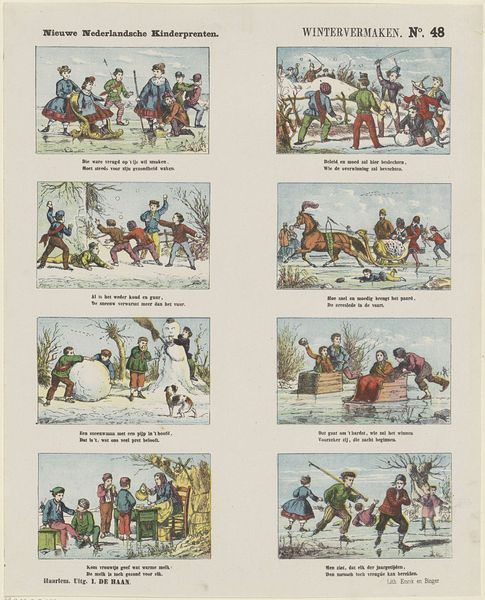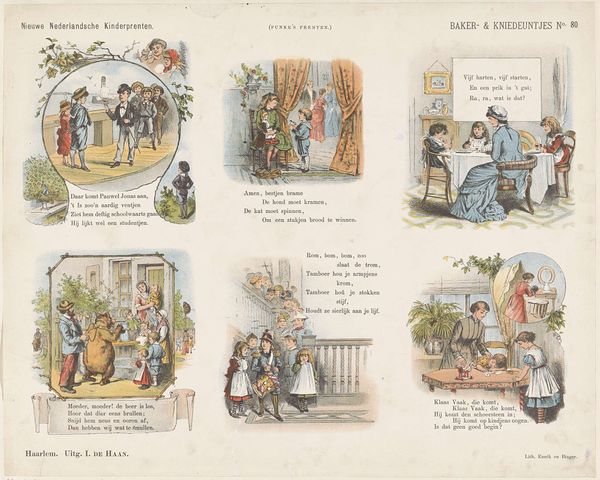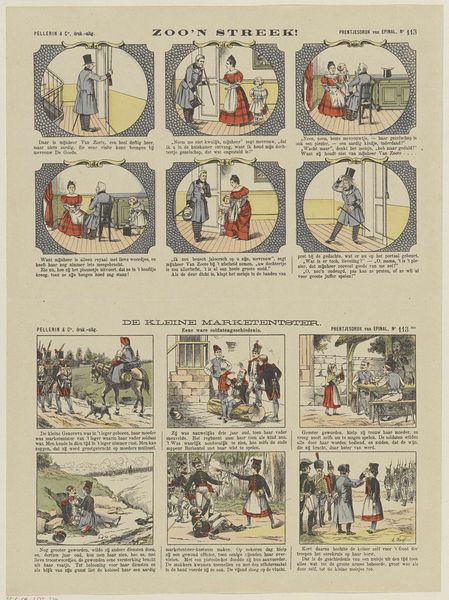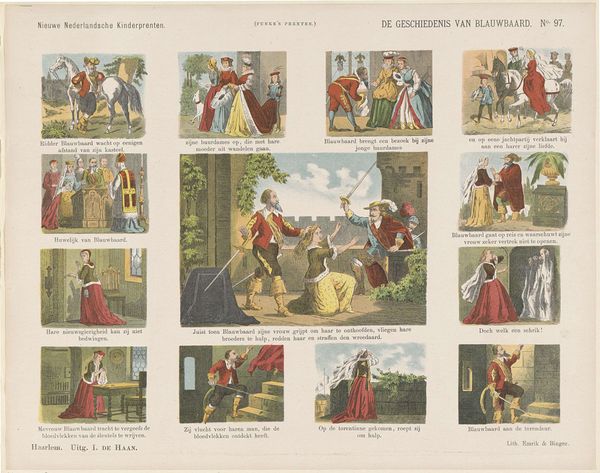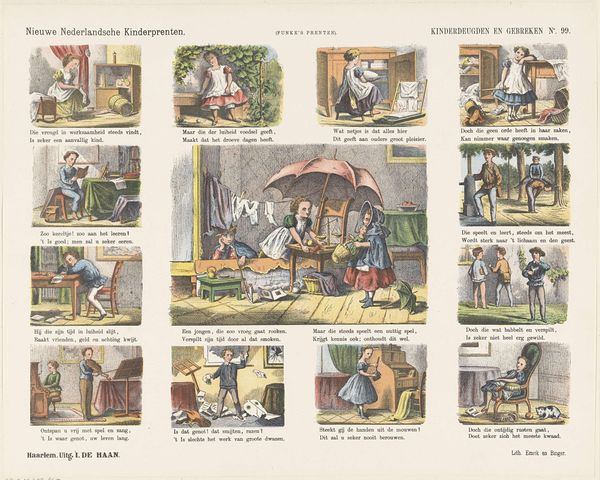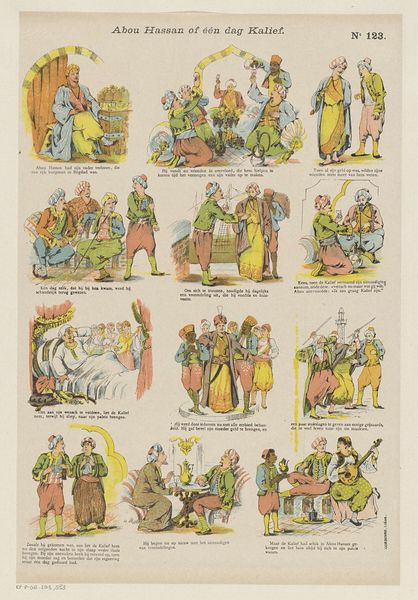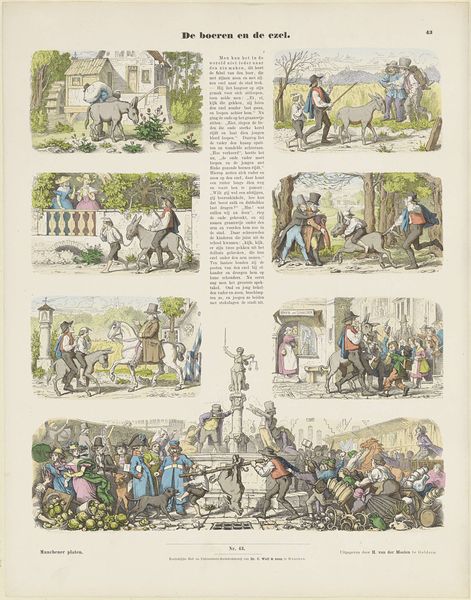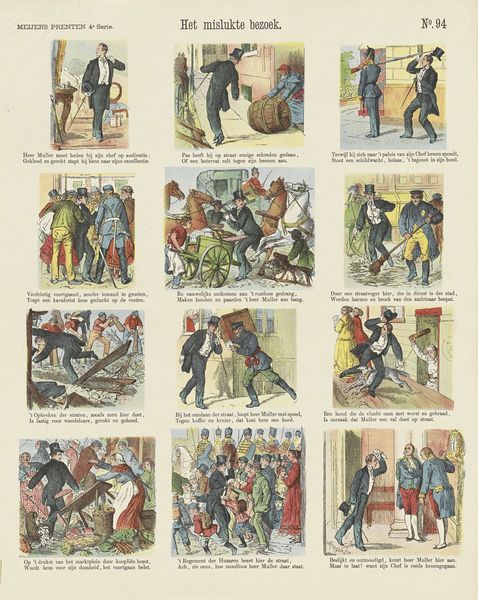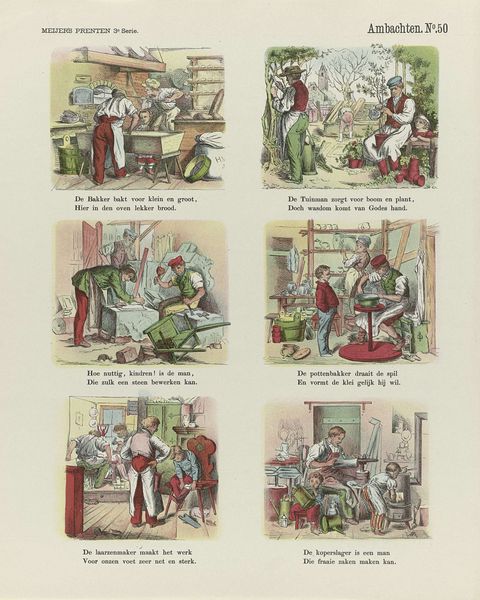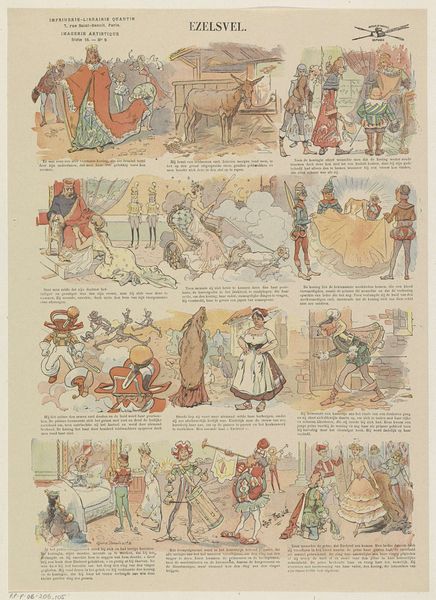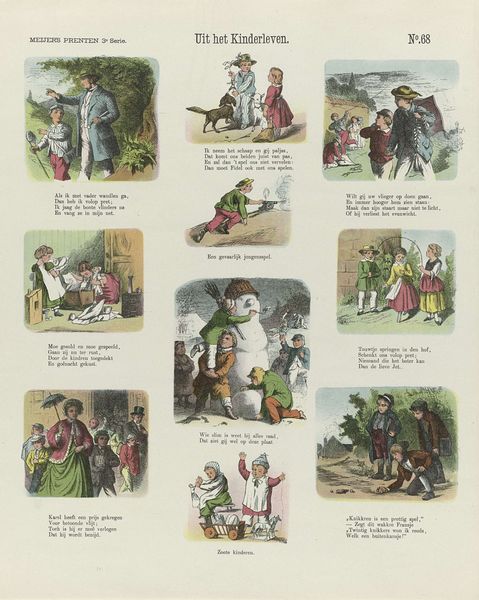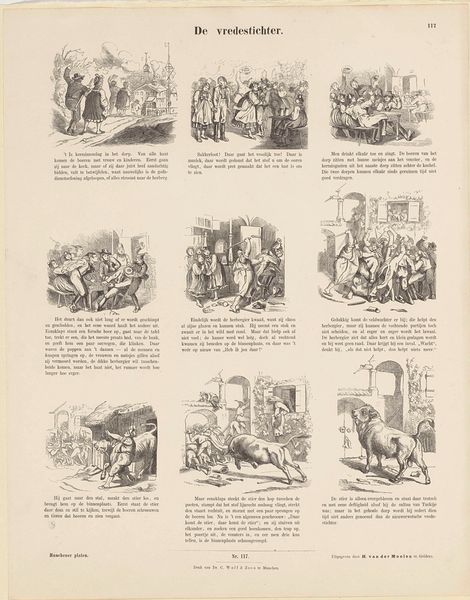
lithograph, print
#
fairy-painting
#
narrative-art
#
lithograph
# print
Dimensions: height 347 mm, width 429 mm
Copyright: Rijks Museum: Open Domain
Curator: This lithograph, titled "De Betooverde Prinses," or "The Enchanted Princess," was created by Arie Willem Segboer sometime between 1903 and 1919. What strikes you first about it? Editor: The layout is very compelling, like a comic strip relating a fairytale. But there is something unsettling about the flat affect of the figures and washed-out colours. It’s like a dream fading at the edges. Curator: Considering its time of production, that might very well have been Segboer's intention! He was working during a period when printmaking was becoming more accessible. We can observe his technique by noticing how the lines create form and delineate space; however, there's a clear sense of mass production – these were most likely made for children. The materials themselves would have been relatively inexpensive, and that affects the final appearance. Editor: Yes, I see your point about the limitations inherent in the process impacting the style. But look at how each frame guides the eye. Notice, for example, the positioning of the prince in the scenes, always drawing you further into the narrative. And those delicate details within each little vignette – the costumes, the sleeping dogs – they build a cohesive story within such a small space. Curator: Indeed, Segboer certainly had a keen understanding of composition. He uses the frame as both a container and a facilitator of storytelling. Though, it’s worth remembering that works such as this, marketed as children's entertainment, helped to shape societal values about courtship and gender roles. Editor: Perhaps, but that's precisely what keeps me coming back to art like this. These images provide valuable insight into a different way of perceiving and visually constructing our shared past. Curator: I find it so rewarding to view it through the lens of production and labour, connecting the artwork to the broader social and economic landscape. Editor: Agreed. Studying art from any angle grants such access, and the chance for ongoing discourse enriches our perception, I think.
Comments
No comments
Be the first to comment and join the conversation on the ultimate creative platform.

